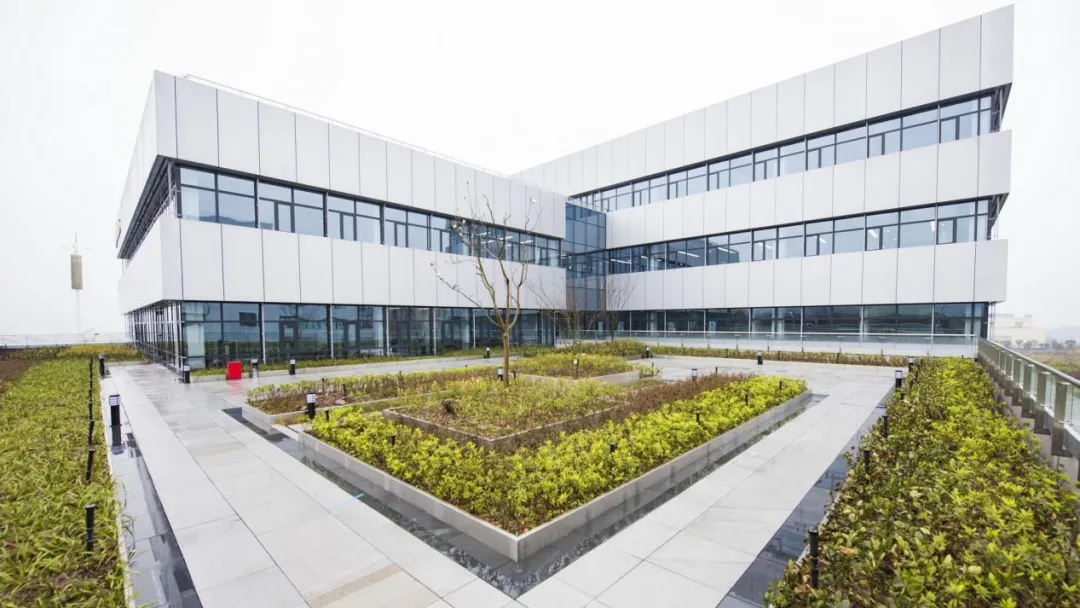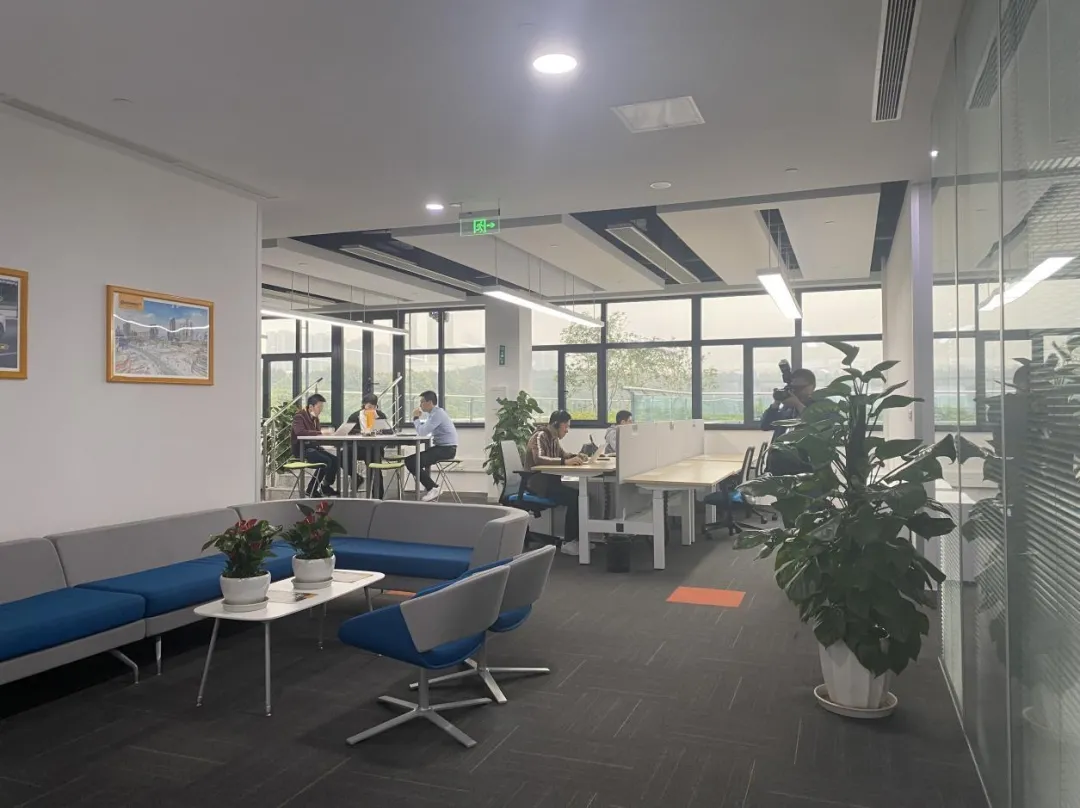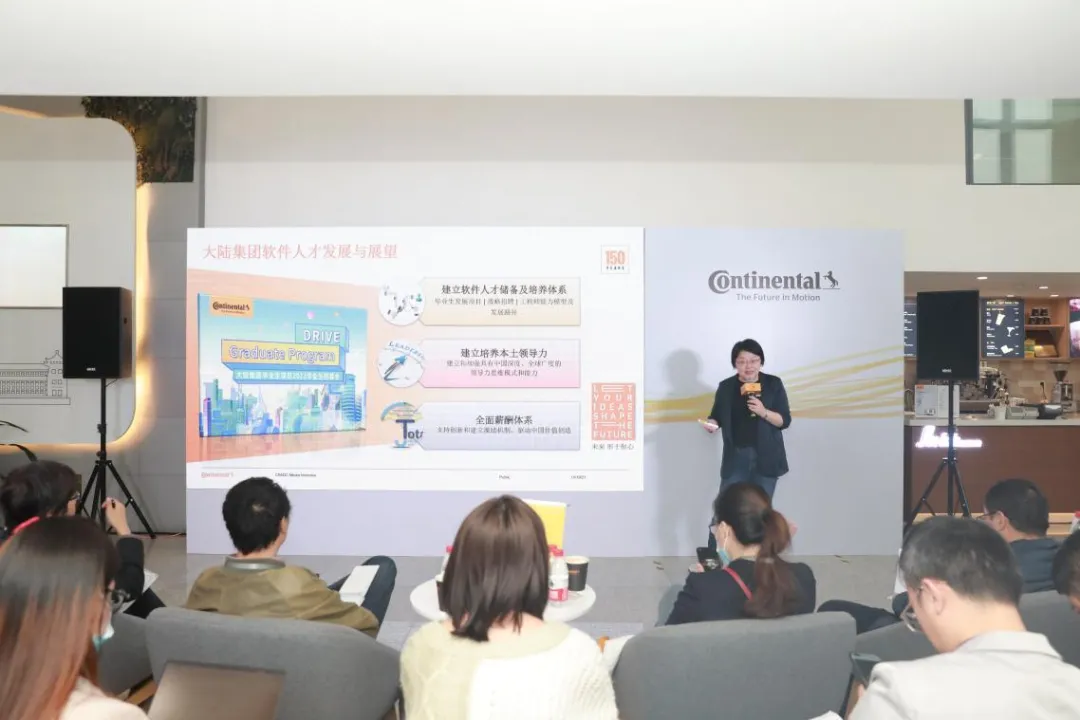A Hundred People Travel Media Focuses on the Evolution of the Automotive Industry Chain
Author: Zheng Wen
On October 18th, Dr. Karl Fuchs, Vice President of Continental Group in China and responsible for innovation and technology in China, and his colleagues departed from Pudong Airport to Chongqing on a flight from Shanghai. Their work this time is to participate in a media communication meeting about the “Continental Group China Software and System R&D Center” the next day.
Such back and forth will become his work norm later. The “China Software and System R&D Center” located in Chongqing, which was officially announced on September 27th, will play an extremely important role in Continental Group for a long time.
There is no doubt that the establishment of this R&D center profoundly reflects Continental Group’s commitment and determination to strengthen the comprehensive ability of local software and system development. It is also a new milestone for Continental Group to deepen its localization strategy of “rooting in the market and serving the market.”
The powerful local R&D team will also help Continental Group to improve its software and system development capabilities and ensure the company’s sustainable growth in the Chinese market.
As Karl Fuchs said, “With the establishment of the China Software and System R&D Center, it will play a vital role in further cultivating local software R&D talents, accumulating software and system development capabilities, and ensuring the company’s sustainable growth in the Chinese market.”
Software Becomes the Core Driving Force
Software-defined cars will be the main theme of the automotive industry for a long time in the future, and it will be repeatedly mentioned and verified by every participant in the automotive industry chain until it’s fully realized.
Wang Jin, the former Senior Vice President of Baidu and the person in charge of the unmanned driving business unit who proposed “software-defined cars,” once said, “In the early 1980s, the electronic systems of a car only had 50,000 lines of code, and the electronic systems of today’s high-end luxury cars have 65 million lines of program code, 1,300 times that of that time.”
In the era of autonomous driving, the scale will explode.
Another supplier giant, Bosch, once predicted that the code for an L2 level autonomous driving car would be approximately 100 million lines, while L3 will be 200-300 million lines, and the code for L5 autonomous driving will be directly increased to 1 billion lines.
At the media communication meeting, Karl Fuchs made a vivid analogy. The Volkswagen ID.3 and ID.4 possibly have more than 20 million lines of code.
What’s the concept of 20 million lines? Like the hand card he holds, a hand card may only have about 50 lines. If all the 20 million lines are printed out, it is equivalent to stacking up to 45 meters high.
 # The Mainland Group’s Three Actions for Software and System Development in China
# The Mainland Group’s Three Actions for Software and System Development in China
The design of the 20 million lines of code must be systematic and scientific; otherwise, the system will become too complex. It’s like building a house; there must be a scientific structural design to ensure that everything is organized. The software and system architecture must be more scientific and efficient.
To better align with the market trends, the Mainland Group has implemented three major actions that have resulted in the birth and incubation of the China Software and System Development Center.
The three major actions are outlined as follows:
-
“Developing more and better solutions to assist business development in China through local development.” This section involves three areas of technology, namely, intelligent network-connected cars, centralized high-performance control units and service-based architecture, as well as edge computing and cloud computing.
-
“The Group attaches great importance to research and development in China, particularly in software and system engineering, which can significantly enhance China’s R&D capabilities.”
-
“Through the establishment of the China Software and System Development Center, Mainland can continue to expand its team size of engineers.” The China Software and System Development Center plans to build a team of up to 500 people.
At the media communication meeting, the China Software and System Development Center also revealed the daily work of its engineers. Some are communicating technical issues remotely with Indian colleagues, while others are working in small groups to comb through module functions. Some are quietly studying and researching materials…
Their most important job right now is the high-performance computing unit.
“Currently, buying a Mercedes S-Class car might involve using more than 100 controllers, but the trend now is towards centralized control. High-performance computing units will play the leading role in the development of future cars, and up to five high-performance computing units will become the real brain of modern cars. This is a fundamental trend,” Karl said. High-performance computing units will undoubtedly become the absolute protagonist in this trend of change.
The Mainland Group’s automobile business is currently implementing a “4+2” strategic layout, which is an overall “four vertical and two horizontal” business architecture model. The four verticals include self-driving and travel, smart travel, user experience, safety and dynamic control; the two horizontals are the profound strength in the software and system fields, architecture and the connected vehicle network.The strength of the software system will support the development of the four verticals. Karl’s words point out the position of the China Software and System Center of Continental AG in the mainland automotive business, “For the China Software and System R&D Center of Continental AG, what we are most proud of is that we can better support Continental AG’s business in the four major fields of China through innovation in software and system aspects.”
Regarding the focus of the work of China R&D Center, Xie Chao, the Director of China Software and System R&D Center of Continental AG, made a comprehensive explanation:
First, in terms of the direction of application scenario development, the R&D Center will closely cooperate with business groups within the group to create high-performance domain servers, regional controllers, edge computing, cloud computing and other products.

Second, the R&D Center will also cooperate with relevant R&D departments within the group that focus on future technology development to create solutions that are suitable for China and local software system platforms, in order to create intelligent interconnected automobile key software products and provide strong services for the Chinese market.
Recruitment and training of software talent is also an important aspect of the arms race. In terms of a better software talent strategy, according to Yang Ye, Vice President of Human Resources at Continental AG, the group has a comprehensive approach.
First of all, it is very important to establish a reserve and training system for software talents. For example, the Drive project targeted at graduates not only opens to Chinese graduates, but also to graduates worldwide. Through systematic training, it helps Continental AG to reserve talents. The development path based on the model of engineer’s abilities can find suitable talents from the reserve system.

Secondly, how to cultivate capacity after recruiting talents. Yang Ye said that Continental AG will rely on 150 years of global resource accumulation and 26 years of localization to help employees improve their personal leadership and technical abilities. Therefore, the leadership characteristics of local talents are not only deeply rooted in China, but also have a global breadth.
Finally, a comprehensive compensation system, as well as innovative and incentive mechanisms. A comprehensive compensation system is not only about wages and benefits, but also more importantly, creating an environment that allows employees to have a very good support system in their entire career and even life. “Build a system from the culture, training, compensation, and benefits aspects to drive Chinese value creation and let engineers better demonstrate their abilities.”
In addition, Yang Ye pointed out that as digitalization accelerates, the limitations of regions on talent development are becoming smaller and smaller. For example, the Continental AG Global Software Academy is a learning and exchange platform for improving software capabilities for global colleagues. This is undoubtedly a very attractive resource advantage and a powerful competitive advantage in the talent war.An employee at a software and system development center in mainland China said, “I can see data from various projects worldwide in this environment, which can help me learn and study knowledge and improve my skills. It’s like opening up a wider world.”
Behind the strategic layout of mainland group lies the huge potential of the entire transportation market transformation and the strategic position of the Chinese market.
According to McKinsey’s forecast, the global intelligent automotive software and electronic and electrical market will reach 469 billion US dollars (approximately 2.99 trillion yuan) by 2030, nearly twice that of 2020.
IHS predicts that the autonomous driving car market will begin a explosive growth cycle around 2025. By 2035, half of the vehicles on the road will achieve autonomous driving, and the total revenue of autonomous driving whole vehicles, related equipment, and applications will exceed 500 billion US dollars.
IHS also predicts that by 2035, China’s autonomous driving cars are expected to reach 5.7 million, surpassing the United States’ 4.5 million to become the world’s largest autonomous driving technology application market. Similarly, Boston Consulting Group also stated that China will become the world’s largest autonomous driving market within 15 years.
However, like other companies, the mainland group also faces practical difficulties such as the epidemic and semiconductor supply shortages. Under multiple adverse factors, it is the Chinese market that provides strong business support to the mainland group.
Last year, the mainland group still achieved sales growth of about 2% year-on-year in the China region. Data show that in 2020, 24% of its sales came from Asia, and the China region made significant contributions.
Whether from the perspective of profit growth opportunities or the strategic position of the Chinese market, or the group’s operational performance needs, the strategic position of the mainland group’s software and system center in China is self-evident.
For years, the architectural adjustments and software layouts have been a strategic “scheming” of the mainland group for the future development direction.Back in 2015, Continental Group acquired Elektrobit Automotive, a renowned software solutions and services provider, for $680 million, to expand its capabilities in automotive systems and software development. This company has a strong software expertise, providing engineering services, software, algorithms and development tools for various ADAS functions; providing interactive design for human-machine interfaces; developing ECU based on Autosar standard; automotive network security protection, etc.
In 2018, Continental Group began a major organizational change by splitting its powertrain business into Vitesco Technologies and seeking independent listing. Meanwhile, towards smart mobility, Continental Group restructured its two major business segments of Chassis & Safety and Interior divisions. Chassis & Safety was renamed as Autonomous Mobility and Safety while Interior was renamed as Connected Car & Networking. The entire Continental Group was divided into three sub-groups, namely Automotive Technologies, Rubber Technologies and Vitesco Technologies.
On September 30th, during the Supervisory Board Meeting in Hanover, the Headquarters of Continental Group confirmed the further adjustment of the organizational structure.
Starting from January 1, 2022, the Tire and Contitech Business Unit (currently part of the Rubber Technologies sub-group) will become an independent sub-group. At the same time, the Automotive Technologies sub-group (renamed as Automotive Group from 2022 onwards) will undergo a comprehensive restructuring.
The restructuring of Automotive Technologies sub-group involves the dissolution of Connected Car & Networking and Autonomous Mobility and Safety business units. Relevant departments will be reorganized into five business units according to the sub-group’s strategic fields of action, namely Safety and Dynamic Control, Autonomous Mobility and Travel, Smart Travel, User Experience, Architecture and Connected Car.
Among them, Connected Car & Networking will be divided into three business units: Architecture and Connected Car, User Experience, and Intelligent Travel. They will integrate business activities related to connected technology, high-performance computing units, display and operation technology, and mobile services for fleet operators and commercial vehicle manufacturers.
Autonomous Mobility and Safety will be divided into two business units: Autonomous Mobility and Travel, and Safety and Dynamic Control. These business units cover advanced driver assistance systems and autonomous driving, as well as safety electronics products, sensors, brake and chassis systems-related businesses.
Continental Group CEO Akio Shinoda explained the reasons for the structural changes and added: “We are integrating professional skills, especially in software.”As SITOOCHE said, due to the pandemic, WmAuto Technologies’ listing was forced to be postponed (It was listed on the Frankfurt Stock Exchange on September 16th). However, the mainland group has made significant progress in building software core capabilities.
In March of this year, the mainland group acquired a portion of the shares of Recogni, a start-up company focused on artificial intelligence and real-time object recognition chip architecture research. In the future, this new processor will be used in the mainland group’s high-performance vehicle computers and other applications to accelerate the processing of sensor data in the automation and autonomous driving process.
In April of this year, during the Shanghai Auto Show, the mainland group signed a memorandum of cooperation with Horizon to jointly establish a joint venture. The two sides will focus on the Chinese market and integrate the AI chips and algorithms of Horizon into the mainland group’s cameras and central processing units.
“The high-performance computing unit is a very complex and challenging project, and almost no company has the ability to complete it alone. That’s why we seek industry cooperation to complete this important project,” said Karl. While acknowledging the high difficulty of the high-performance computing unit, he also emphasized his own strengths.
He believes that “Horizon has expertise in chips, and we have our core capabilities in software, so we seek breakthroughs in many directions through the powerful joint venture we have formed with Horizon.”
Obviously, in the process of transforming into a technology company, the construction of software core capabilities has become the consensus of supplier giants.
During a media communication meeting this year, Bosch Group CEO Denner also pointed out, “We need rich software integration experience. For domain controllers and vehicle computing platforms, the complexity of software is extremely high, and there will be different sources. They must be integrated to work. For the industry, it is a big challenge. We realize that software integration skills are very important and are a core capability.”
So, how has the mainland group progressed in building this core capability?
It has 20,000 software and information technology experts worldwide, as well as a software academy. Currently, one billion cars are equipped with various functions developed by Continental Group’s software and information technology experts. In China, where the company has been deeply rooted for 26 years, the mainland group has 21 R&D centers, more than 2,000 R&D engineers, 41 product development laboratories, and 4 product performance testing centers.The high-performance computing unit of Continental Group has been installed on the ID series models of Volkswagen Group; Genesis, a subsidiary of Hyundai Motor Company, has also adopted Continental’s domain controller and launched mass production; Continental has also secured the first order of high-performance computing unit in the field of commercial vehicles. As of the first half of this year, the order volume of Continental’s high-performance computing unit has reached about 5 billion euros.
This year marks the 150th anniversary of Continental Group, a history longer than the civilization of automobiles. In the past, about 1 billion drivers entrusted their safety to Continental Group while traveling; today, among every four cars in the world, three of them are equipped with Continental’s technology; in the future, all these achievements will be sealed.
New medals require new achievements.
From a giant supplier in the automotive and transportation industry to a global technology company providing connectivity solutions, this world’s second-largest automotive supplier is still making strides… and Continental China’s Software and System Development Center from Chongqing will provide the propulsion for this giant ship.
Just like the names of the conference rooms on the fifth floor of Continental China’s Software and System Development Center, Andes, Himalayas, Ge Le Shan… as implied, the center aims to climb every peak and help Continental Group succeed in reaching new horizons.
This article is a translation by ChatGPT of a Chinese report from 42HOW. If you have any questions about it, please email bd@42how.com.